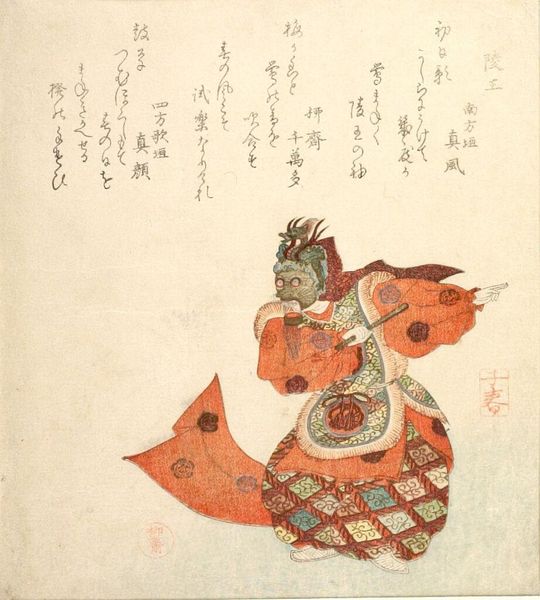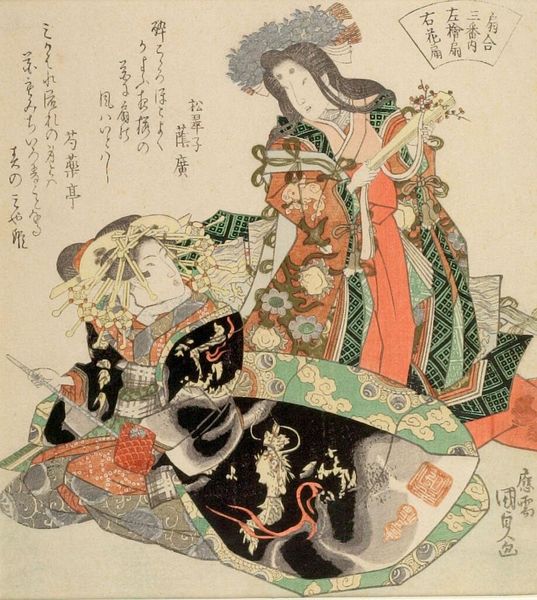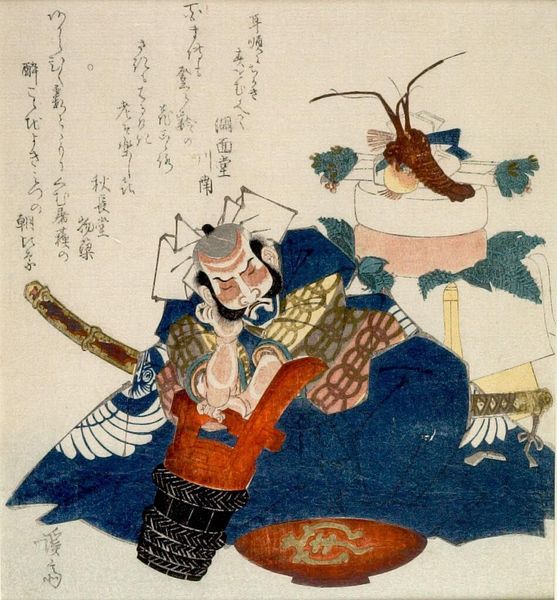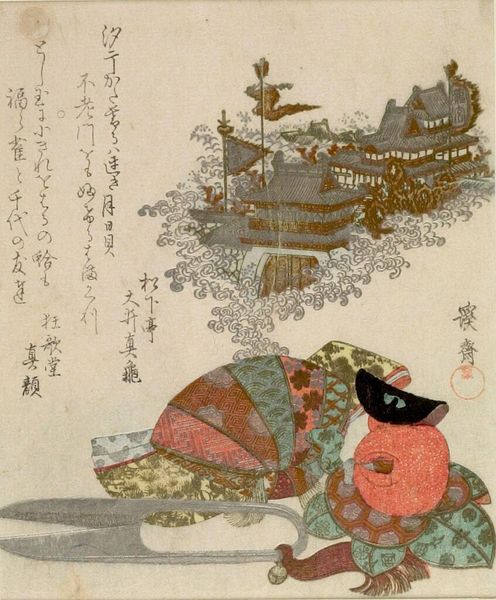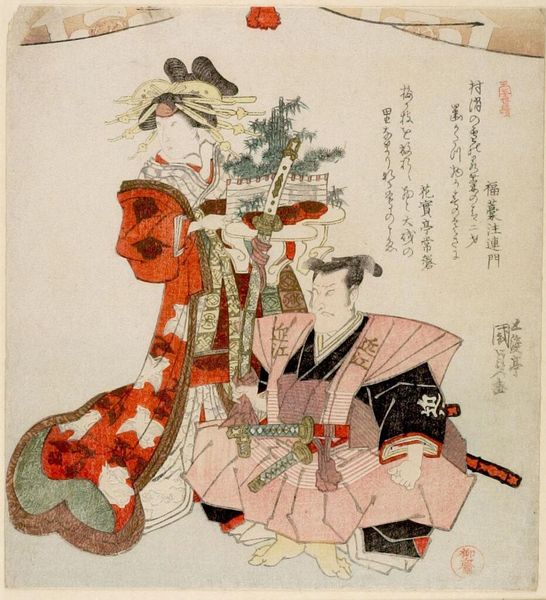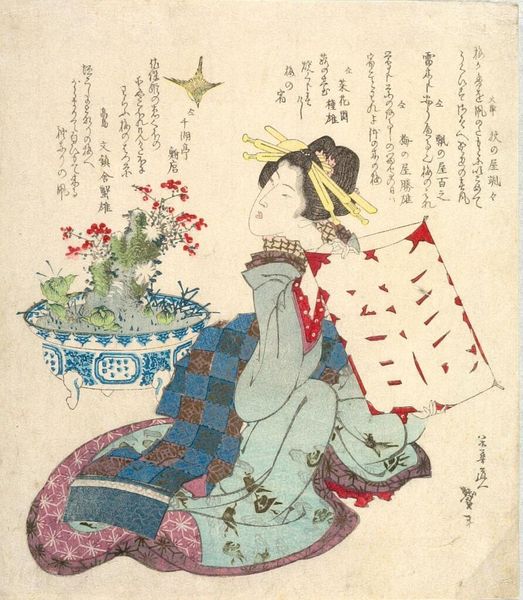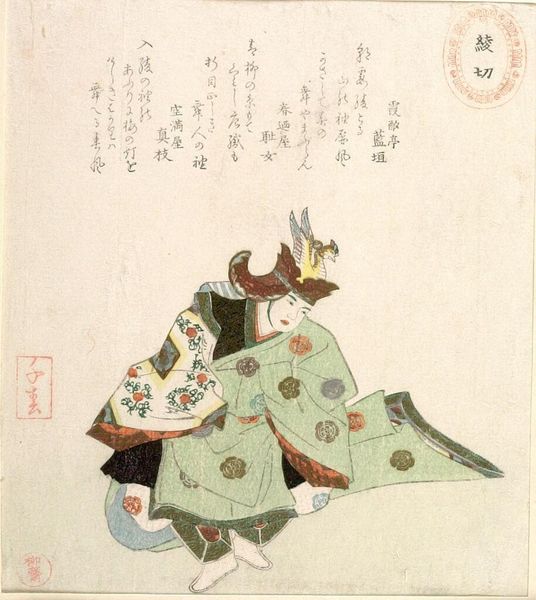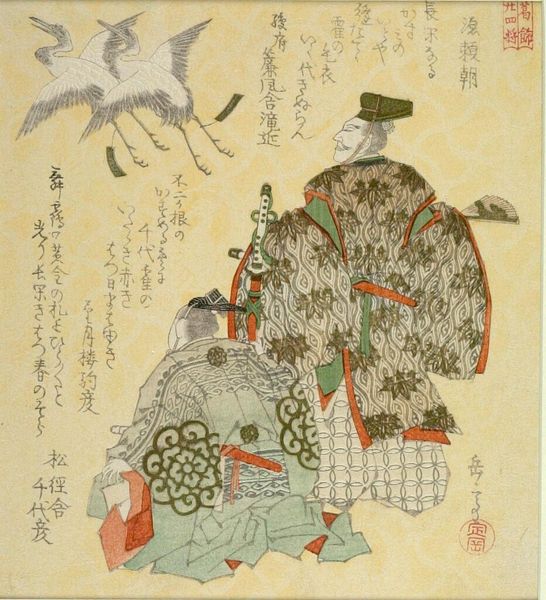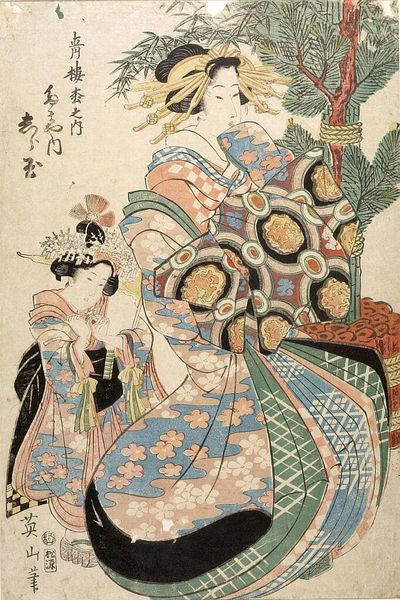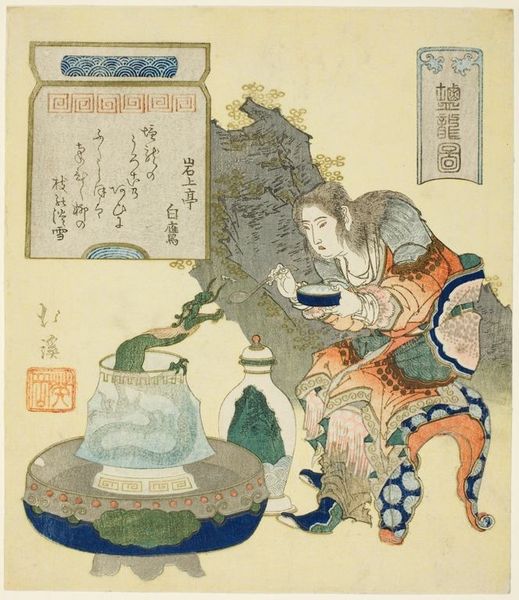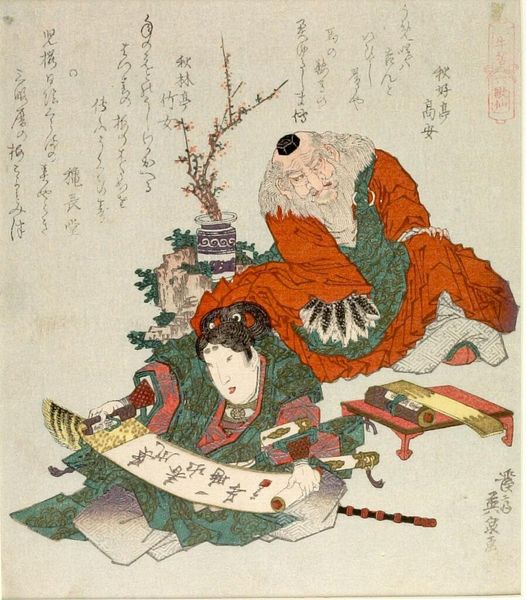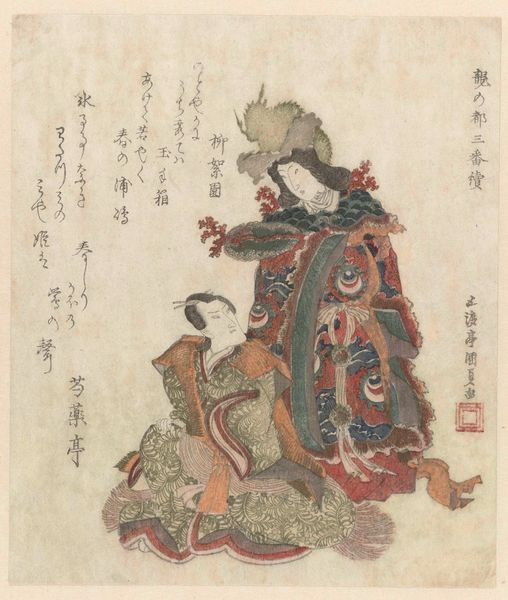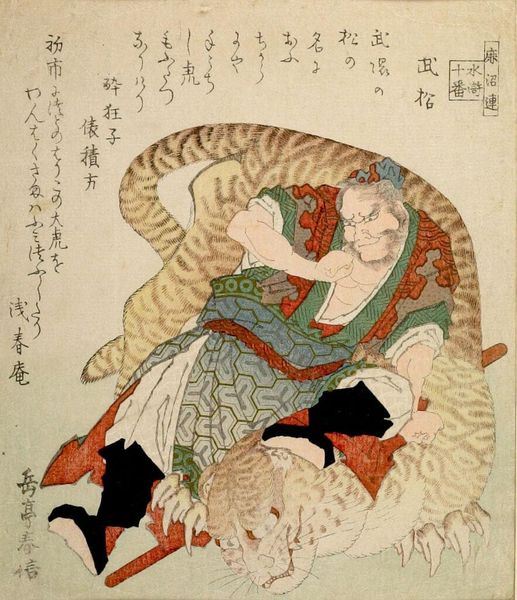
The Bugaku Dance KochÅ c. 18 - 19
Copyright: CC0 1.0
Curator: Takashima Chiharu, active in the late 18th and early 19th centuries, created this print, "The Bugaku Dance KochÅ," now in the Harvard Art Museums. Editor: My first impression is one of gentle movement—the soft colors and flowing lines create a sense of lightness, almost like a dream. Curator: The KochÅ dance itself, part of the Bugaku tradition, represents the butterfly, carrying associations of transformation and ephemeral beauty. Editor: Indeed, the butterfly wings on the dancer’s costume—the careful rendering of each circle, the subtle shifts in hue—are meticulously designed. The composition leads the eye upward, and the overall effect is quite delicate. Curator: The butterfly also symbolizes the soul in many cultures, reflecting a deeper connection between the dancer, nature, and the spiritual realm. Editor: Yes, and I can see how Chiharu uses the texture of the print itself, with those visible woodblock impressions, to enhance that feeling of fragility. Curator: It's fascinating how Chiharu uses the cultural memory of Bugaku to evoke such profound emotional responses. Editor: Seeing it through this lens, I better understand how the formal elements contribute to this evocative work.
Comments
No comments
Be the first to comment and join the conversation on the ultimate creative platform.
